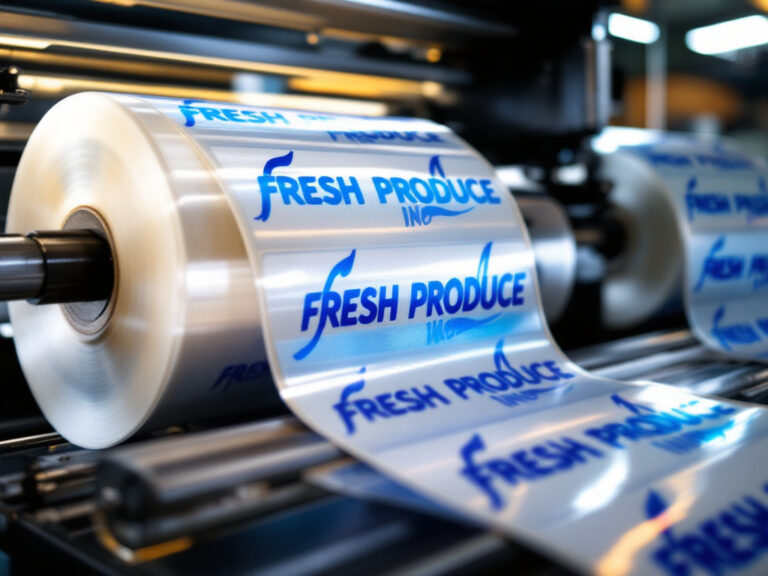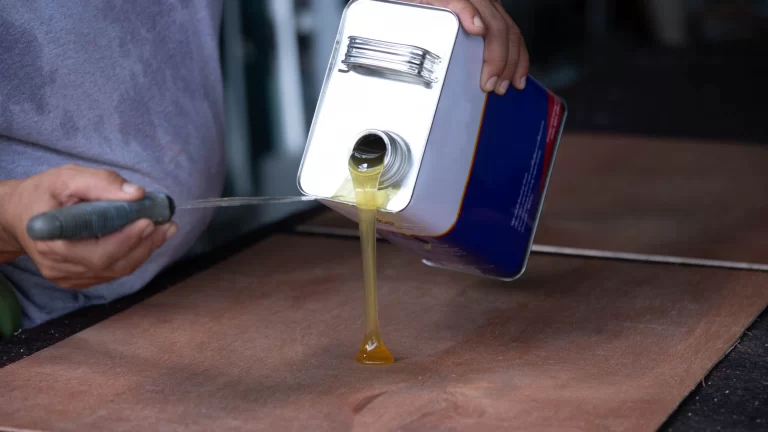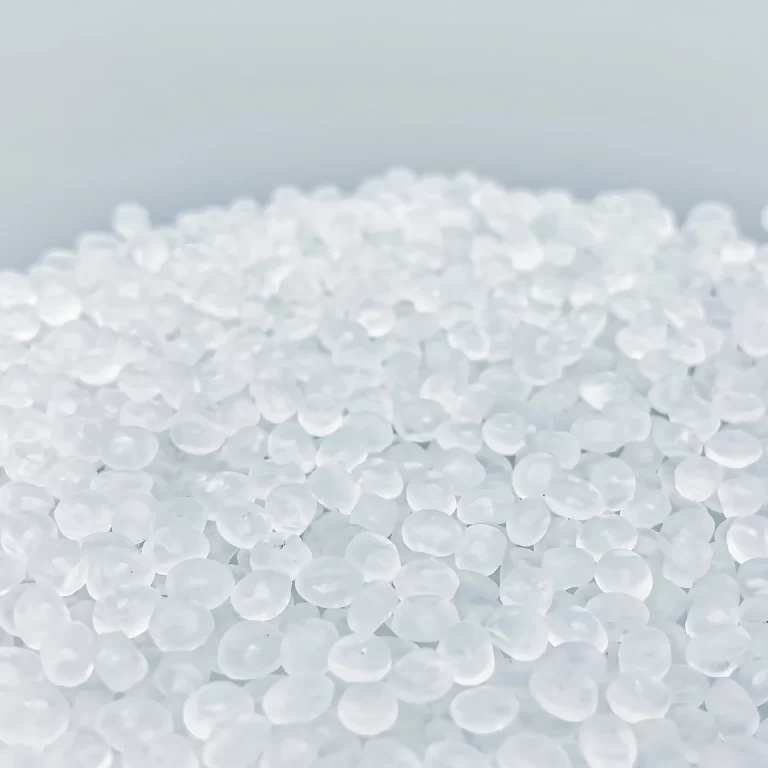Introduction to UV Flexo Inks
UV flexographic inks have become a cornerstone in the printing industry, particularly for applications like labels and packaging. Their ability to cure instantly under ultraviolet light makes them ideal for producing high-quality prints with vibrant colors and sharp details. This rapid curing process not only enhances print quality but also streamlines production by eliminating the need for drying time, making them highly efficient.
For printers working with labels, flexible packaging, and other similar applications, UV flexo inks offer excellent chemical and physical resistance, often eliminating the need for additional protective coatings. Their versatility and performance make them a preferred choice for many printing needs.
At UNIVO Ltd., we’re here to help you explore the benefits and applications of UV flexo inks further.
Composition of UV Flexo Inks
UV flexo inks are complex formulations designed to deliver optimal performance and print quality. Understanding their composition helps printers appreciate how these inks work and why they’re so effective. The key components of UV flexo inks include:
- Oligomers: These form the backbone of the ink, providing the basic film properties and adhesion to the substrate.
- Monomers: Acting as diluents, monomers adjust the ink’s viscosity and contribute to the final cured film properties.
- Pigments: These provide color and determine the ink’s opacity or transparency.
- Photoinitiators: These crucial components initiate the curing process when exposed to UV light.
- Additives: Various additives enhance specific properties like flow, wetting, and scratch resistance.
When exposed to UV light, the photoinitiators trigger a rapid polymerization reaction. This process links the oligomers and monomers into a solid, durable film, effectively “drying” the ink instantly. The result is a tough, chemically resistant print that adheres well to the substrate.
This unique composition allows UV flexo inks to offer superior performance in terms of cure speed, color strength, and resistance properties compared to conventional inks, making them an excellent choice for many printing applications.
Advantages of UV Flexo Inks
UV flexo inks offer several significant benefits that make them increasingly popular in the printing industry:
- Fast curing process: UV inks cure instantly when exposed to UV light, allowing for immediate handling and processing of printed materials.
- Energy efficiency: The UV curing process consumes less energy compared to heat-based drying methods used for conventional inks.
- High color strength and vibrancy: UV inks produce intense, vivid colors that stand out on various substrates.
- Excellent chemical and physical resistance: Cured UV inks offer superior resistance to solvents, abrasion, and other environmental factors.
- VOC-free formulation: Unlike solvent-based inks, UV inks contain no volatile organic compounds, making them more environmentally friendly.
- Superior print quality: UV flexo inks enable finer dots and sharper details, resulting in high-resolution prints.
- Improved productivity: The instant curing allows for faster press speeds and quicker turnaround times.
- Versatility: UV flexo inks can be used on a wide range of substrates, including papers, films, and foils.
These advantages make UV flexo inks an attractive option for printers looking to enhance their print quality, increase efficiency, and reduce their environmental impact.
Applications of UV Flexo Inks
UV flexo inks are versatile and can be used in a wide range of printing applications, particularly in the packaging and label industries. Some key applications include:
- Labels:
- Product labels
- Promotional labels
- Retail labels
- Barcode and variable data labels
- Flexible packaging:
- Food pouches
- Snack wrappers
- Pet food bags
- Shrink sleeves and wrap-around labels:
- Beverage bottles
- Cosmetic containers
- Household product packaging
- Food and beverage packaging:
- Dairy product containers
- Bakery packaging
- Confectionery wrappers
- Personal care products:
- Shampoo bottles
- Cosmetic tubes
- Soap packaging
- Horticulture labels:
- Plant tags
- Seed packets
- Nursery labels
- Industrial labels:
- Durable goods labels
- Chemical drum labels
- Automotive parts labels
The ability of UV flexo inks to adhere to various substrates and their resistance to chemicals and abrasion make them suitable for these diverse applications. Their fast curing and high-quality print results contribute to their popularity across different sectors of the printing industry.
Types of UV Flexo Inks
UV flexo inks come in various formulations to meet different printing requirements and applications. The main types include:
- Standard series:
- General-purpose inks suitable for a wide range of applications
- Balanced performance in terms of adhesion, color strength, and cure speed
- Premium high-pigmentation series:
- Higher color strength and opacity
- Ideal for applications requiring intense colors or printing on dark substrates
- Can potentially reduce ink consumption
- Low migration (LM) inks:
- Specifically designed for food packaging applications
- Formulated to minimize the risk of ink components migrating through the substrate
- Comply with strict food safety regulations
- UV-LED curable inks:
- Designed to cure under UV-LED lamps instead of traditional mercury vapor lamps
- Offer energy savings and longer lamp life
- Suitable for heat-sensitive substrates
- Specialty inks:
- Metallic inks for decorative effects: For non-direct food contact packaging applications, consider the NOVA STAR UV FLEXO INKS These inks offer excellent adhesion, fast cure, and high brilliance, making them suitable for coated PE, PP, papers, and board.
- Fluorescent inks for high-visibility applications
- Thermochromic inks for temperature-sensitive indicators
- White inks: For shrink sleeve applications and general label printing, NOVA WHITE UV FLEXO INKS provide excellent opacity and adhesion on various coated papers and films. Certain grades also offer excellent shrink characteristics, making them ideal for shrink films like PVC, PET, and OPS.
- Universal UV flexo inks: If you’re looking for a versatile solution that works well on shrink films and general labels, the NOVA CURE UV FLEXO INKS range provides excellent adhesion on a wide range of substrates like coated PE, PP, PVC, PET, and OPP. These inks also boast high color strength and are suitable for printing speeds of 50-150 m/min.
Each type of UV flexo ink is designed to meet specific performance criteria and regulatory requirements, allowing printers to choose the most suitable option for their particular application and substrate.
Key Features to Look for in UV Flexo Inks
When selecting UV flexo inks for your printing projects, several important features should be considered:
- Low viscosity: UV flexo inks should have optimal viscosity, typically in the range of 19-24 seconds, to ensure proper flow and transfer during the printing process.
- Fast cure rates: Look for inks that cure quickly under UV light, allowing for increased productivity and faster turnaround times.
- High color strength: Choose inks with high pigmentation for vibrant, intense colors and excellent coverage.
- Excellent dot reproduction: UV flexo inks should be capable of producing sharp, well-defined dots for high-quality prints.
- Substrate compatibility: Select inks that adhere well to a wide range of materials, including coated and uncoated substrates, as well as synthetic materials.
- Intercoat adhesion: Ensure the inks have good adhesion between layers for multi-color printing.
- Chemical and physical resistance: Look for inks that offer superior resistance to solvents, abrasion, and other environmental factors.
- Low odor and low migration properties: For food packaging applications, choose inks with minimal odor and migration characteristics.
- Flexibility: Select inks that can withstand bending and flexing without cracking, especially for applications like shrink sleeves.
- Rheological properties: Consider inks with good flow and stability, as well as low foam generation to minimize press downtime.
- Light fastness: Choose inks with appropriate light fastness ratings (BWS levels) for your specific application to ensure color stability over time.
By carefully evaluating these key features, you can select UV flexo inks that will deliver optimal performance for your specific printing needs and substrates.
Sustainability Aspects
Sustainability is becoming increasingly important in the printing industry, and UV flexo inks offer several environmental benefits:
- Reduced environmental impact: Compared to solvent-based inks, UV flexo inks have a significantly lower environmental footprint due to their VOC-free formulation.
- Energy efficiency: The UV curing process consumes less energy than traditional heat-based drying methods, contributing to reduced overall energy consumption.
- Waste reduction: UV flexo inks typically result in less waste due to their long shelf life and stability in the press. This leads to reduced ink disposal and more efficient use of resources.
- Compliance with industry guidelines: Many UV flexo inks are formulated to meet strict industry standards, such as:
- Low-odor formulations: Modern UV flexo inks are designed to have minimal odor, improving working conditions and making them suitable for a wider range of applications.
- Recyclability: Some UV flexo inks are designed to be compatible with recycling processes, supporting the circular economy in packaging.
- Water-free process: Unlike water-based inks, UV flexo inks don’t require water for cleanup, reducing water consumption and wastewater generation.
- Long-lasting prints: The durability of UV-cured prints can contribute to longer product life cycles, potentially reducing the need for frequent reprinting or packaging replacement.
By choosing UV flexo inks, printers can demonstrate their commitment to sustainability while still delivering high-quality print results. As the industry continues to evolve, we can expect further advancements in eco-friendly UV flexo ink formulations.
Choosing the Right UV Flexo Ink
Selecting the appropriate UV flexo ink for your specific application is crucial for achieving optimal print quality and performance. Consider the following factors when making your choice:
- Substrate compatibility:
- Ensure the ink adheres well to your chosen substrate
- Consider factors like surface energy, porosity, and coating
- End-use requirements:
- Determine if the application needs specific properties (e.g., chemical resistance, light fastness)
- For food packaging, choose inks that comply with relevant regulations
- Print job specifications:
- Consider the required print speed, color intensity, and finish (matte, gloss, etc.)
- Evaluate the need for opacity or transparency
- Curing equipment:
- Match the ink to your UV curing system (traditional UV or LED-UV)
- Ensure your equipment can provide sufficient energy for proper curing
- Color management:
- Choose inks that can achieve your desired color gamut
- Consider options for custom color matching if needed
- Environmental considerations:
- Opt for low-migration formulations for sensitive applications
- Consider inks with eco-friendly certifications if sustainability is a priority
- Press compatibility:
- Ensure the ink’s viscosity and flow properties are suitable for your press setup
- Consider any specific requirements of your anilox rolls and doctor blades
- Cost-effectiveness:
- Balance ink performance with overall cost
- Consider factors like coverage, mileage, and potential waste
By carefully evaluating these factors, you can select a UV flexo ink that not only meets your technical requirements but also aligns with your business goals and customer expectations.
Best Practices for Using UV Flexo Inks
To maximize the performance and quality of your UV flexo printing, follow these best practices:
- Proper storage and handling:
- Store inks in a cool, dry place away from direct sunlight
- Keep containers tightly sealed when not in use
- Follow manufacturer’s recommendations for shelf life and storage conditions
- Optimizing press settings:
- Adjust anilox roll selection based on ink requirements and desired coverage
- Fine-tune doctor blade pressure and angle for optimal ink transfer
- Monitor and maintain consistent ink temperature during printing
- Maintenance and cleaning procedures:
- Regularly clean and maintain press components, including anilox rolls and doctor blades
- Use appropriate cleaning solutions recommended by the ink manufacturer
- Implement a thorough cleaning routine between color changes
- Pre-press considerations:
- Ensure proper plate selection and preparation for UV flexo inks
- Optimize artwork and color separations for UV flexo printing
- Surface Treatment:
- Modify the substrate surface to enhance ink adhesion.
- Ensure the substrate surface tension is approximately 10 dynes/cm higher than the surface energy of the flexo ink. For example, treat the substrate to 45-48 dynes/cm if the flexo inks typically have a surface tension of 35-38 dynes/cm.
- Utilize corona treatment, the most widely used surface treatment technology, to control surface energy for successful ink adhesion.
- Accurate measurement of substrate surface energy is key to surface modification.
- Curing optimization:
- Regularly check and maintain UV lamps or LED units
- Adjust curing parameters (power, speed) based on ink and substrate requirements
- Use UV meters to monitor and maintain consistent curing energy
- Quality control:
- Implement regular print quality checks during production runs
- Monitor ink viscosity and adjust as needed
- Perform adhesion and cure tests to ensure optimal performance
- Safety measures:
- Provide proper personal protective equipment (PPE) for handling UV inks
- Ensure adequate ventilation in the pressroom
- Train staff on safe handling procedures and potential hazards
- Color management:
- Use spectrophotometers and color management software for accurate color matching
- Maintain consistent color standards across different substrates and print runs
By adhering to these best practices, you can ensure consistent, high-quality results with UV flexo inks while maintaining efficiency and safety in your printing operations.
Future Trends in UV Flexo Inks
The UV flexo ink market is continuously evolving, driven by technological advancements and changing regulatory requirements. Here are some trends shaping the future of UV flexo inks:
- Advancements in LED-Curable Formulations:
- UV-LED curing technology continues to gain traction due to its energy efficiency, longer lamp life, and reduced heat output.
- Expect further improvements in LED-curable ink formulations that enhance print quality and substrate compatibility.
- Increased Focus on Sustainability:
- There will be a growing emphasis on eco-friendly UV flexo inks with reduced environmental impact.
- Innovations in biodegradable or recyclable ink components are likely to emerge.
- Innovations in Ink Performance and Versatility:
- Developments in ink chemistry will lead to improved adhesion, color strength, and chemical resistance.
- New formulations will be designed to work effectively on a broader range of substrates, including sustainable materials.
- Digitalization and Automation:
- Integration of digital tools for color management, ink formulation, and press optimization will become more prevalent.
- Automated systems will enhance efficiency and consistency in UV flexo printing processes.
- Regulatory Compliance:
- Stricter regulations regarding food safety and environmental impact will drive the development of compliant UV flexo inks.
- Manufacturers will focus on creating inks that meet or exceed these standards while maintaining performance.
- Customization and Personalization:
- Advances in UV flexo technology will enable more flexible and variable printing options, catering to the growing demand for personalized packaging.
As the industry continues to evolve, UV flexo inks will play a crucial role in meeting the demands of sustainability, efficiency, and customization in the printing sector.
Conclusion
UV flexo inks have become a cornerstone in the printing industry, offering numerous benefits such as fast curing times, vibrant colors, and high durability. As of 2022, the UV flexo inks market was valued at USD 1.2 billion and is projected to reach USD 2.1 billion by 2030, growing at a CAGR of 7.5% from 2024 to 2030. This growth is driven by the increasing demand for high-quality printing solutions across various industries, including labels and food packaging.
The global flexographic inks market, which includes UV flexo inks, is expected to reach USD 5.96 billion by 2025, with a CAGR of 5.58% from 2018 to 2025. UV-curable flexo inks are witnessing significant growth, projected to expand at a CAGR of 5.5% from 2021 to 2031. These inks are favored for their superior print quality, environmental benefits, and versatility on various substrates, including paper, plastic films, and foils.
As the industry continues to evolve, UV flexo inks will play a crucial role in meeting the demands for sustainability, efficiency, and customization. With advancements in LED curing technology and eco-friendly formulations, UV flexo inks are poised to remain a leading choice for printers seeking high-performance and environmentally responsible solutions. At UNIVO Ltd., we are committed to supporting our customers in navigating these trends and optimizing their printing processes with UV flexo inks.
FAQ
What are the main advantages of UV flexo inks?
- UV flexo inks offer fast curing times (typically within seconds), high color strength (up to 50% higher than conventional inks), excellent chemical and physical resistance, and are VOC-free, making them environmentally friendly. They also enable printing speeds of 50-150 m/min, depending on UV lamp power.
What substrates can UV flexo inks be used on?
- UV flexo inks can be used on a wide range of substrates, including coated papers, films (PE, PP, PVC, PET, OPP), and shrink films like PVC, PET, PET-G, and OPS. They are suitable for various applications, such as labels, flexible packaging, and shrink sleeves.
How do UV flexo inks cure?
- UV flexo inks cure when exposed to ultraviolet light, which triggers a polymerization reaction that turns the liquid ink into a solid film. This process typically occurs within seconds under UV light, allowing for immediate handling and processing of printed materials.
Are UV flexo inks suitable for food packaging?
- Yes, there are UV flexo inks specifically formulated for food packaging applications, known as low migration (LM) inks. These inks minimize the risk of ink components migrating through the substrate and comply with regulations like the Swiss Ordinance and EuPIA guidelines. For example, NOVA STAR UV FLEXO INKS are designed for non-direct food contact packaging.
What is the difference between UV and UV-LED curing?
- UV-LED curing uses light-emitting diodes instead of traditional mercury vapor lamps, offering energy savings of up to 70%, longer lamp life (up to 20,000 hours vs. 1,000 hours for mercury lamps), and reduced heat output. This makes UV-LED curing suitable for heat-sensitive substrates.
How do I ensure good adhesion of UV flexo inks?
- Proper substrate surface treatment, such as corona treatment, is essential for enhancing ink adhesion. Ensure the substrate’s surface energy is at least 10 dynes/cm higher than the ink’s surface tension. For example, if the ink has a surface tension of 35-38 dynes/cm, the substrate should be treated to 45-48 dynes/cm.
Can UV flexo inks be used for shrink sleeves?
- Yes, UV flexo inks are suitable for shrink sleeves due to their excellent shrink characteristics, retaining adhesion after shrinking by more than 50% on certain substrates. For instance, NOVA CURE UV FLEXO INKS offer good retained adhesion on shrink films like PVC and PET.
Are UV flexo inks more expensive than traditional inks?
- While UV flexo inks might be more expensive initially (typically 10-20% higher cost), they offer long-term benefits like reduced waste (up to 30% less), faster production times (increasing productivity by up to 20%), and superior print quality, which can offset the higher cost.
How do I store UV flexo inks?
- Store UV flexo inks in a cool, dry place away from direct sunlight, with temperatures between 15°C and 25°C (59°F to 77°F). Keep containers tightly sealed when not in use to prevent contamination and ensure a shelf life of up to 12 months.
What safety precautions should I take when handling UV flexo inks?
- Use proper personal protective equipment (PPE) such as gloves, goggles, and masks. Ensure adequate ventilation in the pressroom to prevent inhalation of potential fumes. Train staff on safe handling procedures to minimize exposure risks.
References
- https://markets.businessinsider.com/news/stocks/global-flexographic-inks-market-is-expected-to-reach-usd-5-96-billion-by-2025-fior-markets-1029255884
- https://sites.google.com/view/industry-research-focus/market-reports/uv-flexo-inks-market-by-application
- https://gitnux.org/flexo-ink-industry-statistics/
- https://www.transparencymarketresearch.com/flexographic-printing-inks.html
- https://www.mordorintelligence.com/industry-reports/uv-cured-printing-inks-market/market-size
- https://www.thebusinessresearchcompany.com/report/uv-curable-inks-global-market-report
- https://www.grandviewresearch.com/industry-analysis/flexographic-printing-market-report
- https://www.mordorintelligence.com/industry-reports/united-states-flexographic-printing-market/market-trends
- https://www.smithers.com/services/market-reports/printing/the-future-of-flexographic-printing-to-2028#:~:text=The%20Future%20of%20Flexographic%20Printing%20to%202028&text=This%20Smithers%20report%20provides%20an,and%20end%2Duse%20sectors%20forecasts.
- https://www.technavio.com/report/flexographic-printing-inks-market-industry-analysis
- https://www.inkworldmagazine.com/contents/view_breakingnews/2024-02-19/ink-world-exclusive-north-american-ink-sales-report-for-2023/
- https://www.prnewswire.com/news-releases/uv-inks-market-to-reach-13-5-billion-by-2027–reports-and-data-301318350.html
- https://www.labelandnarrowweb.com/issues/2013-04/view_features/flexo-uv-flexo-inks/ – This article discusses the features of UV flexo inks, including high color strength and excellent adhesion.
- https://www.flexography.org/industry-news/flexo-ink-basics-chemistries-manufacturing-maintenance/ – Provides insights into the composition and manufacturing of flexo inks, including UV types.
- https://www.fujifilm.com/us/en/business/graphics-printing/flexographic-printing/inks/uv-flexo – Offers details on UV flexo inks suitable for various substrates and applications.
- https://www.dic-global.com/en/products/flexo_ink/ – Discusses the classification and applications of flexo inks, including UV types.
- https://www.inxinternational.com/products/inks-and-coatings/process/flexographic – Covers the applications and features of UV flexo inks, including shrink sleeve printing.









